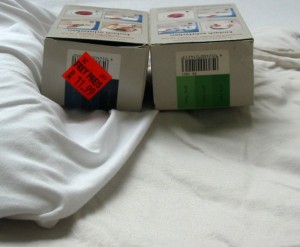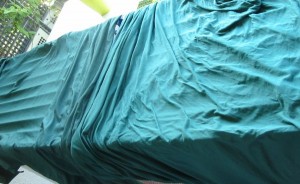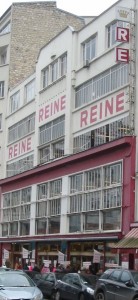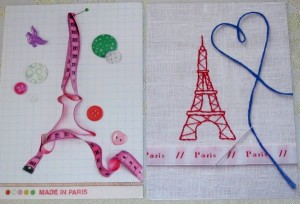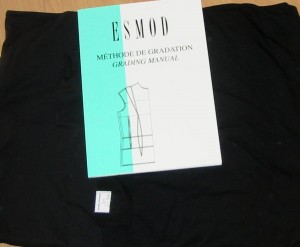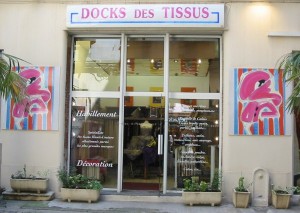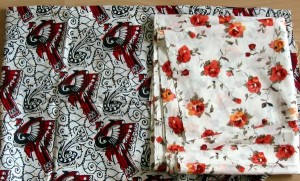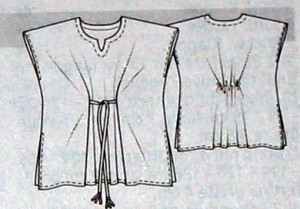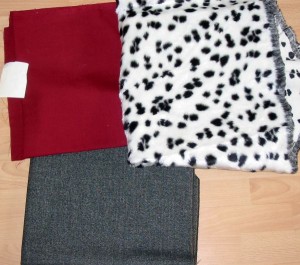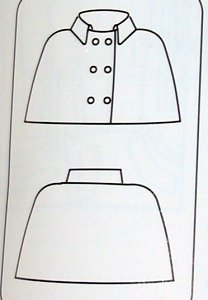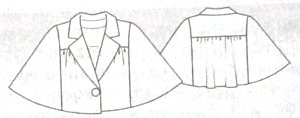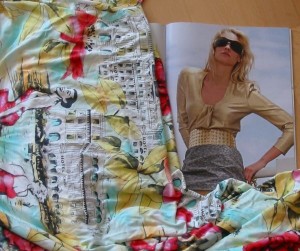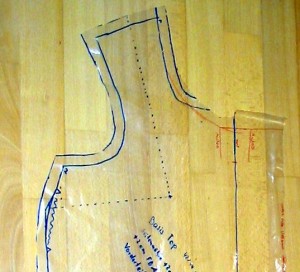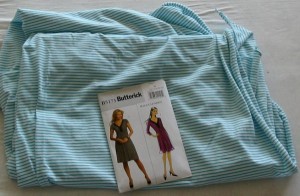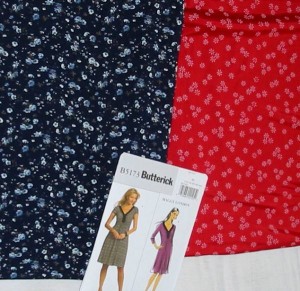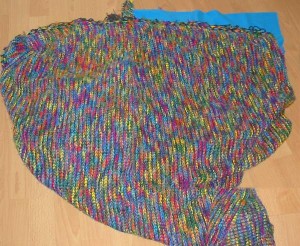“Billich will ich” ist nicht nur das Motto dieses Ladens, sondern auch etlicher anderer in der Straße. Aber die verkaufen keine Stoffe.
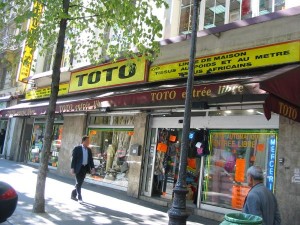
Die Front des Geschäftes sieht ebenfalls so aus: schwarz auf schreiendem gelb, klare Ansage, kein chichi.
“I want cheap” would be a good slogan, not only for this shop, but also for others in that surrounding. But the other ones don’t carry fabrics.
The shopfront matches the style: black on screaming yellow, no frills.
Im Erdgeschoß gibt es Handtücher, Bettwäsche, auch mal ein paar billige Klamotten und alles, was der Einkäufer sonst so gefunden hat. Im Keller findet man vor allem Wachstuch für Tischdecken, aber auch mal Stoff für Duschvorhänge, dazu Schaumstoff und anderes Polstermaterial.
Wer durch das ebenfalls mit Stoffen vollgestopfte Treppenhaus nach oben stapft, findet im ersten Stock Bekleidungsstoffe. Bedruckte Baumwolle ab 2 EUR/m, Mantelflausch aus Kunstfaser für 7 EUR/m oder einen Stoff für Anzug oder Kostüm für 5 EUR/m? Die günstigen Stoffe sind nicht von der hochwertigsten Qualität, aber oft in modischen Farben oder Mustern und somit ideal für ein Teil für einen Saison oder ein schnell wachsendes Kind. (Oder auch zwei, denn auch wenn Kunstfaser und Mischgewebe dominieren, haltbar sind die Stoffe oft doch.) Und wenn man ein bißchen genauer hinsieht, findet man durchaus auch schöne Sachen, wie uni-Leinen für 7 EUR/m, schöner Wollboucle für 12 EUR/m oder bezahlbares Vichy-Karo aus Baumwolle in verschiedenen Farben und Karogrößen. (Nur die Dupionseide ist meist teurer als in der Deballage du Marché Saint Pierre, da sollte man zweimal hinsehen.)
Generell zweimal hinsehen sollte man auch, was das Personal tut, denn die einzelnen Angestellten sind unterschiedlich motiviert und abgeschnitten wird eher knapp. Bei elastischen Stoffen auch gerne mal gedehnt. Man nimmt also lieber etwas mehr…
Außerdem gibt es in dieser Etage dann auch noch Nähgarn, Knöpfe, Bänder und Borten und sogar Handstickgarn, Perlen und manchmal Wolle und Stricknadeln. Was halt gerade so da ist.
When you enter you’ll find on the ground floor towels, bedsheets and maybe even some cheap clothes and anything else the buying agent did find for few money. In the basement you’ll find oilcloth in different prints, sometimes also fabric for shower curtains ans foam and material for stuffing.
If you move up through a staircase with fabric leaning to the wall to the first floor you’ll enter the department of fabric for garments. Cotton prints from 2 EUR/m, coat fabric for 7 EUR/m or a fabric for a suit für 5 EUR/m? That is possible. The cheap fabrics are of course not the best quality often in fashionable colours or designs, so perfect for a one-season-garment. (Or even two or three, because even though the materials are mostly polyester or poly-blends, they are surprisingly lasting.) And if look closer you can also find nice linens for 7 EUR/m, boiled wool for 12 EUR/m or affordable Vichy-checks from 100 % cotton. (Only plain silk is usually cheaper at Deballage du Marché Saint Pierre, so choose well, if you want to buy that.
And also better look out what the staff does. They are not all equally motivated and when they cut the fabric it may be a bit scant. Knit fabric may even be stretched. So better buy some more… (Not so difficult at those prices.)
Also they have a small choice of thread (sometimes also serger thread), buttons, ribbons and trims and even beads, wool or hand embroidery thread.
Im zweiten Stock liegt der Stoff dann in Kartons und wird nach Gewicht verkauft. Interessanter ist hier allerdings was sich hinter den raumhoch verglasten Theken abspielt: Hier gibt es eine große Auswahl afrikanischer “WAX”-Stoffe, bunte Drucke, Batiks, aber auch Damast. Diese muß man sich vom Personal zeigen lassen und sie werden in 5 yard Coupons verkauft.
In the second floor the fabrics are in boxes, pieces, some bigger, other smaller and are sold by weight. But what is more interesting is what lays behind the glass counters: A big choice of african “WAX”-fabric, colourful prints, batiks but also damask. Those fabrics you can not fumble yourself, they are displayed on the wall and the staff has to show you your chioce through the glass. They come precut to 5 yard coupons.
Noch ein Stock höher geht es zu Vorhang und Möbelstoffen. Auch hier sieht man den billigen Stoffen meist deutlich an, daß etwa der Druck weniger detailliert und sorgfältig ausgeführt ist als bei den teureren Varianten beim Raumausstatter oder der Stoff dünner. Doch auch hier finden sich echte Schnäppchen. Und manchmal ist die einfache und billige Variante besser als nichts. Und da es meist etliche der typischen französischen etwa barocken Muster gibt, ist das auch eine gute Quelle für historische Kostüme.
Next floor is home decor, fabric for upholstery and curtains. Again the cheap fabrics look different from their more expensive “look alikes” in the fancy and more expensive specialized shops. The fabric may be thinner and more flimsy, the print visibly simplified or not so accurate. But also here you can spy real bargains. And sometimes the simple version for 1/3 of the price may have its attractivity. Often you’ll find her the typical french “baroquesque” designs like fleur de lys and of course toile de Jouy which makes it a good source for historical costumes.
Ich mag diesen Laden für seinen Wundertüteneffekt, weil man nie weiß, was man gerade findet und die echten Schnäppchen, die sich immer wieder auftun lassen.
I like this shop for the surprise (you never know, what they will offer this week) and for the real bargains you can find. (But of course not always will, but without that hunting would be boring… 😉 )
Adresse: 49, boulevard Barbès, 75018 Paris (Métro Marcadet-Poissonièrs)
(Es gibt sehr viele Filialen in Paris und in ganz Frankreich, aber die meisten sind kleiner und nicht alle haben auch Stoffe.)
(The company has a lot of shops all over Paris and the rest of France, but most of them are smaller and not all of the carry fabrics.)
Und natürlich gibt es eine Webseite: And of course there is a website: www.toto.fr
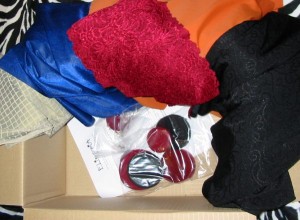 Und so konnte ich mein heiß erwartetes Päckchen von Elingeria in Empfang nehmen.
Und so konnte ich mein heiß erwartetes Päckchen von Elingeria in Empfang nehmen.
